(Although artist Carol Moore was not invited to participate in the Venice Biennale, she went there to insert her art, an installation/interaction called “Riccordo da Gaspara Stampa /A Remembrance of Gaspara Stampa.” Moore is the director of the Summer MFA Program at the University of the Arts. Here’s her report:)
E-mail and photos from Carol Moore

Stampa (1523-1554) was a Venetian honored courtesan, poet and musician whose work (as well as the work of other women poets of the Italian Renaissance) has been the catalyst for the objects and installations I have been making since 1997 (image, finding handkerchiefs on the Giardini grounds at the Venice Biennale, Nov. 3, 2005).
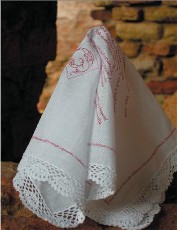
One of these objects is a “fanbook” I published at the UArts Borowsky Center, which I placed in the collection of the National Library of Venice, where I arranged more than 100 handkerchiefs in a path toward vitrines holding the fanbook along with books published in Venice of Stampa’s work in 1554, the year of her death (image, a handkerchief, or fazoletta, a remembrance of poet Gaspara Stampa).
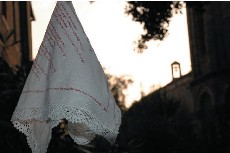
Rainer Maria Rilke mentions her in his “Duino Elegies,” yet her work and that of many other women poets like her has remained largely unknown even though their work represented the most prolific time for women poets in all Western literature, except for the 20th century (image, A fazzoletto caught in the branch of a tree in the courtyard ruins of the 7th century basilica of Santa Maria Assunta on the island of Torcello).

My mission was to bring the poet to the audience and the audience to the poet beyond using a traditional book format. By using a portable signifier, a handkerchief, I could place the poem anywhere in any environment. I used interior and exterior landscapes as a backdrop. I situated the handkerchiefs so they became objects for consideration that the viewer notices, has time to study, can possess, or reject, pass on, or resituate (image, a fazzoletto floating along a canal on the island of Torcello).
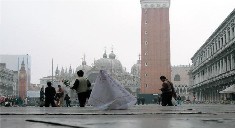
I could observe a response: The object provoked questions about the piece and the poet. I performed the piece as well as replaced handkerchiefs as they were taken. I placed another 50-plus around Venice where tourists would visit, including locations on the grounds of the Giardini at the Biennale (image, a fazzoletto in San Marco square, Venice).

The finders were invited by printed message to read the poem, to find more of the poet’s work in the Marciana Library Collection, and to keep the handkerchief as a remembrance of the poet (image, “Sonnets of Gaspara Stampa,” published in 1554, whose sonnet is printed on the handkerchiefs (fazzoletti) that were placed in key Venice and Biennale locations to guide the finders to the Biblioteca where they could find more of her work).
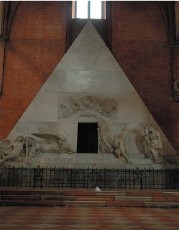
By making these portable multiples, I am not making work that is viewed as something rare, precious or permanent, although it may be perceived as such, or at least as an object that appears precious in the intimacy of the design and the sentiments expressed by the poet at the moment when the finder discovers it; yet it becomes available to all who find one and it can be a rare or special experienc for them, existing in the moment and then after, if they respond in a way that provokes further investigation (image, fazzoletto before Antonio Canova’s tomb in the Church of the Frari, Venice).
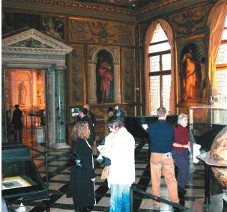
I’ll be doing a similar installation and interaction at Bryn Mawr College in March/April 2006 (image, the Sansovino Gallery, Biblioteca Nazionale Marciana, adjacent to the Correr Museum, where the installation and main interaction took place Nov. 6, 2005. One hundred fifty handkerchiefs imprinted with a sonnet of Stampa in English and Italian were arranged in a path that led visitors to two vitrines containing books published in the 16th and 18th centuries of Stampa’s sonnets and the artist book “A Woman of a Certain Age” published by Moore. Moore created the installation and interaction in the Correr Museum, on the grounds of the Giardini of the Biennale and at key historic locations in Venice, Nov. 3-7, 2005. Dottore Marino Zorzi, director of the Biblioteca Nazionale Marciana sponsored the installation and the arrangement of the contents of the vitrines from the Rare Book Collection of the Biblioteca).
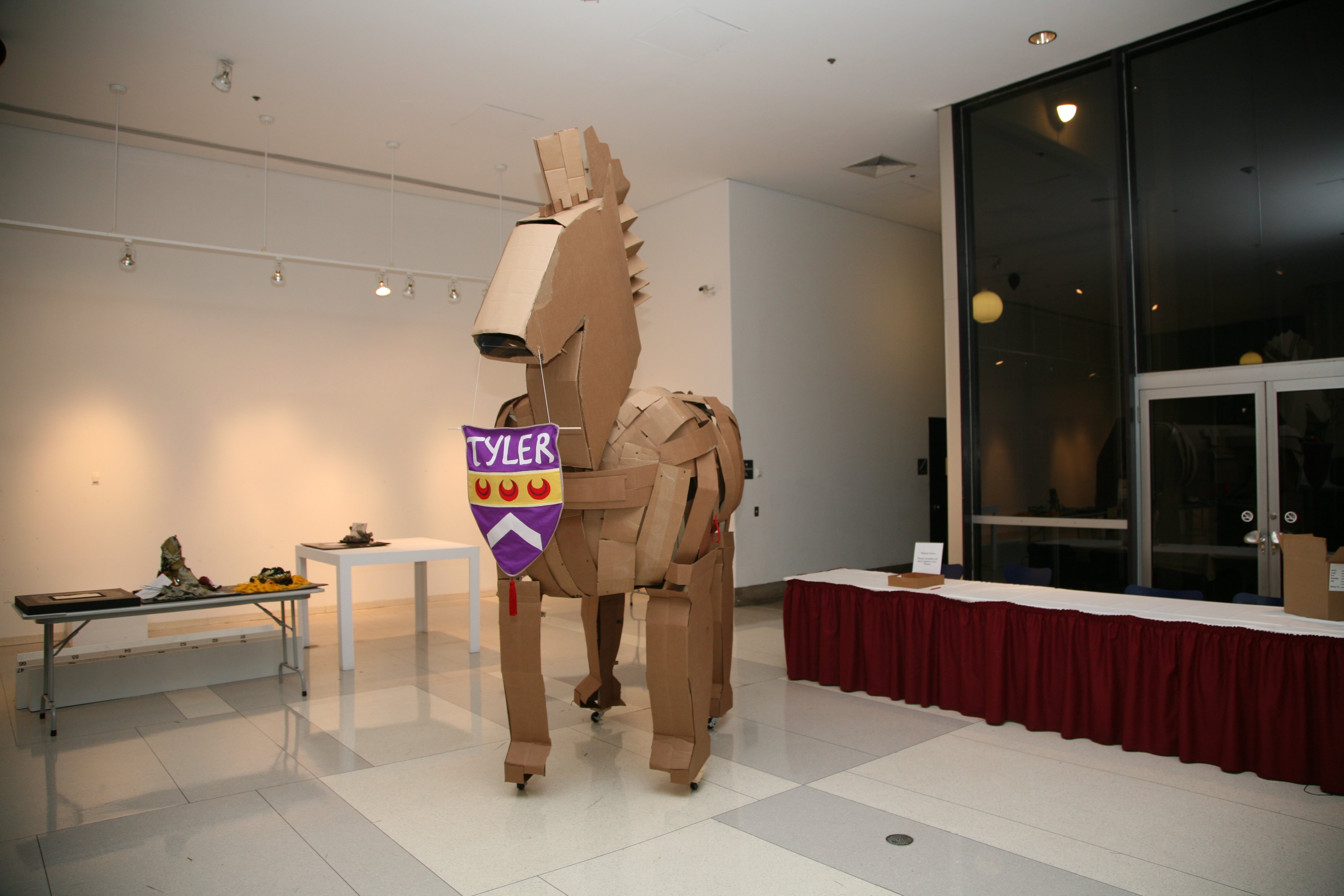
Detail of the Sansovino Gallery installation.

Mother and daughters from Bruges want to know about Stampa (that’s Moore on the left).
–Post by artist Carol Moore









